





TABLE OF CONTENTS
Circularity in Action: Transforming Practices and Perspectives
By Dr. Vishwesh Singbal
Navigating the Circular Economy: Challenges and Innovations in India and Beyond
By Ms. Shalini Goyal Bhalla
The Future of Circularity: Pivots to Societal Welfare and Business Responsibility
By Dr. Pooran Chandra Pandey
Circular Design for Plastics: An Essential Fix for Sustainability
By Dr. Vidhi Vora
Fostering Smartphone Circularity Through Repair Cafes
By Ms. Kritika Mahajan
Examining Repair Café's Role in Goa's Textile Sector
By Ms. Bipanchi Borah
Circular Economy in the Tourism Sector of Goa
By Mr. Prajwal Hegde
The Rise of the Circular Economy in India
Recent News
FROM THE GUEST EDITOR
Dear Readers,
At the outset, I would like to express my gratitude to Prof. Divya Singhal and the members of the Centre for Social Sensitivity and Action (CSSA) at GIM for this opportunity to serve as the guest editor of this edition of SDG Samvaad. This edition is themed "Circularity in Practice" and focuses on the profound shift from the traditional linear “take-makedispose” based economy to one where every product is designed and consumed with its lifecycle in mind.
My journey into the realm of circular solutions began unexpectedly. I was tasked with overseeing a GiveGoa project in collaboration with the International Council for Circular Economy (ICCE). The objective of the project was to assess the viability of a "Repair Café" initiative for smartphones in Goa, a concept that not only promotes repair over replacement but also serves as an opportunity for community engagement and sustainability. This project was not only an eye-opener but a gateway to understanding the immense impact of supply chain management within the circular economy framework. The project's success led to the establishment of a Circular lab at GIM, in association with ICCE, focusing on Sustainable Development Goal (SDG) 12: Responsible Consumption and Production.
This edition of SDG Samvaad brings together insights from diverse voices in the circular economy sphere, covering expert opinions and personal stories that highlight innovative practices. We hope you find this edition both informative and inspiring. Enjoy your read, and join us in making a positive impact on our world.
Dr. Vishwesh Singbal Assistant Professor, Goa Institute of Management
Circularity in Action: Transforming Practices and Perspectives
Dr. Vishwesh Singbal Assistant Professor, Goa Institute of Management

As someone passionate about operations and supply chain management (SCM), I've come to appreciate the symbiotic relationship between supply chains and the circular economy SCM isn't just about ensuring products get from point A to B efficiently; it's about rethinking those journeys to minimize waste and make the most of our resources.
This perspective has fundamentally shifted how I approach teaching and researching SCM, placing sustainability and circularity at the heart of the conversation.
In my view, SCM and the circular economy are inextricably linked SCM provides the operational backbone necessary to bring the ideals of the circular economy to life This involves everything from selecting sustainable materials and employing designs for disassembly to implementing reverse logistics that recapture value at the end of a product's life.
Digital technologies too play a crucial role in this relationship They offer unprecedented visibility and control over the supply chain, allowing for more precise decisions that align with circular economy principles. Whether it's using data analytics to optimize resource use or blockchain to ensure the traceability of sustainable materials, technology is a key enabler of the circular transformation in SCM At a personal level, exploring the relationship between SCM and the circular economy has not only enriched my academic pursuits but also reshaped my daily practices. I strive to integrate these principles into my life, advocating for sustainable consumption and production both inside and outside the classroom
In this special edition, we bring together six articles that share a common thread: the transformative power of circular economy principles We begin with Ms. Shalini Goyal Bhalla's insightful analysis of the current landscape of circular economy principles in India and beyond, setting the stage for a comprehensive understanding of the challenges and innovations driving circular transformation.
Following this, in a thought-provoking article, Dr Pooran Chandra Pandey delves into the historical context and contemporary relevance of sustainability, particularly emphasizing the pivotal shift towards circular economy principles From the aftermath of World War I to the introduction of the SDGs in 2015, Dr. Pandey's insightful analysis navigates through key milestones and challenges shaping the trajectory of societal welfare and business responsibility on a global scale. Dr. Vidhi Vora then challenges us to reconsider our relationship with plastics, advocating for circular design principles that can turn this ubiquitous material into a pillar of sustainability rather than a symbol of waste
Subsequently, our students, Ms Kritika Mahajan, Ms Bipanchi Borah, and Mr Prajwal Hegde, offer their valuable insights and firsthand experiences garnered while actively participating in circular economy themed projects under GIM’s GiveGoa initiative. Ms. Kritika discusses her learnings from the project investigating feasibility of "Repair Café" initiative for smartphones in Goa highlighting the tangible benefits of repair and reuse in fostering community engagement and environmental sustainability
1
ISSUE 10 - APRIL 2024
Ms Bipanchi’s article on the critical role of repair cafés in the Goa textile sector further exemplifies how circular economy practices can revitalize traditional industries and weave sustainability into the fabric of local communities. Finally, we delve into the Goan tourism sector's journey towards circularity, highlighting the unique challenges and opportunities for embedding circular economy principles within one of our state's key economic drivers
These articles collectively underscore the multifaceted nature of circularity, from grassroots initiatives like repair cafes to global policy shifts and industry innovations

They remind us of the power of collaborative action and the potential for circular principles to not just mitigate environmental challenges but also to unlock new pathways for economic and social resilience We hope that you will find inspiration and valuable insights within these pages, and that they will lead to meaningful conversations and actions in your own spheres of influence Let us continue to embrace sustainability and circularity as guiding principles, fostering innovation, collaboration, and positive change for a more resilient and equitable future

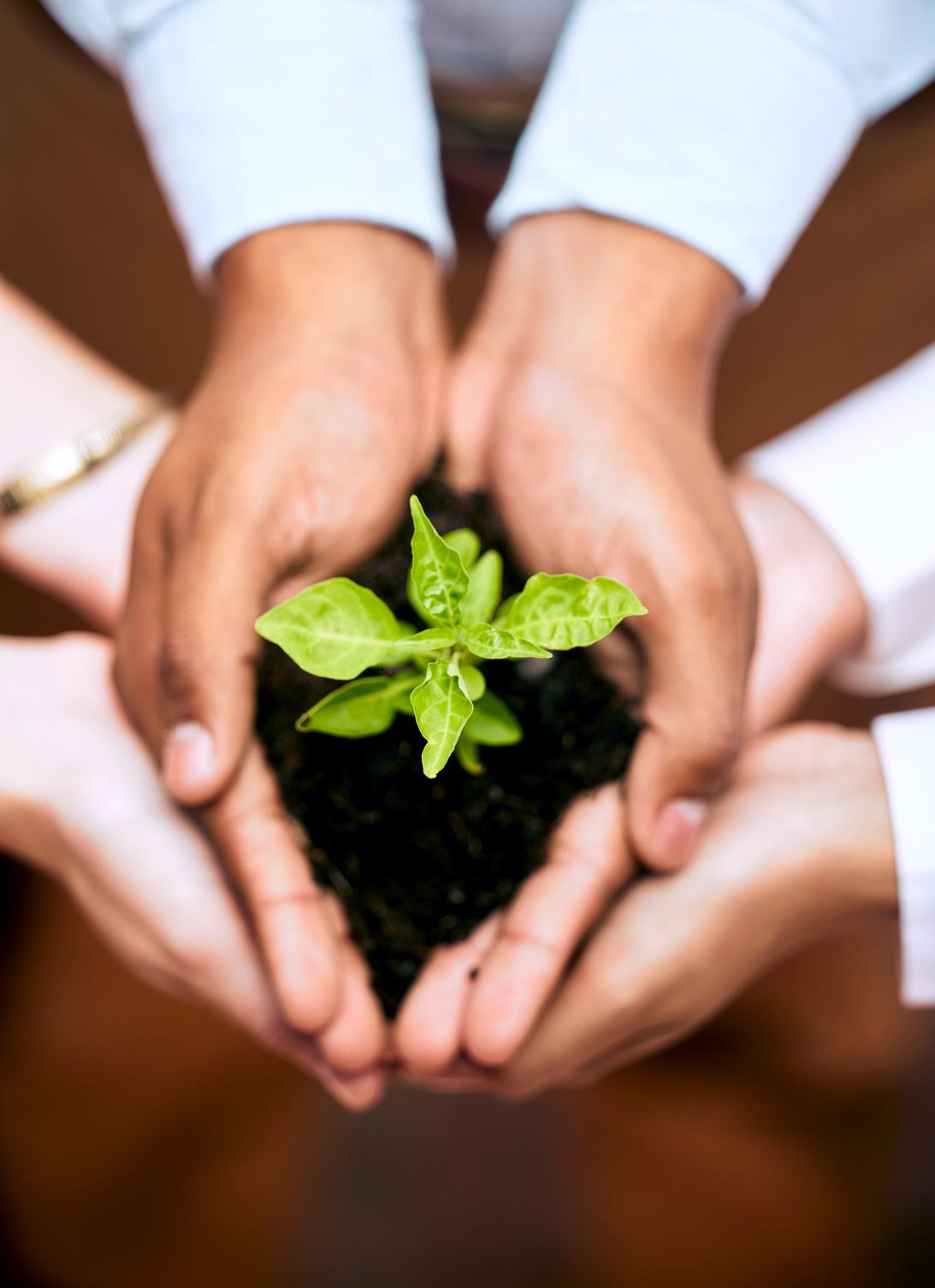
2 ISSUE 10 - APRIL 2024
Navigating the Circular Economy: Challenges and Innovations in India and Beyond
Ms. Shalini Goyal Bhalla MD, International Council for Circular Economy
The concept of a circular economy is gaining momentum as the world grapples with the environmental challenges posed by linear, takemake-dispose economic models In this article, we will delve into the current landscape, challenges, and innovative solutions related to circular economy principles, both in India and on a global scale. As countries increasingly adopt circular economy practices, it's essential to understand the progress made and the obstacles that lie ahead.
The global perspective on the circular economy landscape is evolving rapidly, with increasing recognition of the urgent need for more sustainable economic models. Across the world, countries, businesses, and communities are recognizing the need to reduce waste, conserve resources, and minimize environmental impact.
The European Union's European Green Deal is a comprehensive policy framework that places the circular economy at its core It sets ambitious targets, such as making Europe climate-neutral by 2050, and emphasizes the importance of circularity in achieving these goals The European Union Circular Economy Action Plan outlines measures to reduce waste and promote circular product design Various international initiatives and organizations are actively promoting circular economy principles The Ellen MacArthur Foundation's Circular Economy 100 (CE100) program, for example, brings together leading companies, governments, and cities to collaborate on circular economy projects and initiatives The CE100 network spans across continents, fostering global cooperation
Multinational corporations are increasingly committing to circular economy goals.

Companies like Apple, Google, and Unilever are actively working to reduce waste, extend product lifecycles, and promote recycling and reuse These commitments are driving innovation and influencing supply chain practices globally. The finance sector is recognizing the importance of sustainable investments. Circular economy projects are attracting funding from impact investors, green bonds, and sustainable finance instruments This financial support is accelerating the transition to circular business models Cities worldwide are adopting circular economy principles to enhance resource efficiency, reduce waste, and improve the quality of life for residents Circular city initiatives focus on sustainable urban planning, waste reduction, and the promotion of circular businesses.
India's journey in the circular economy landscape reflects a growing awareness of the need for sustainable practices and the potential benefits of circularity. The Government of India has taken significant steps to promote circular economy practices The introduction of Extended Producer Responsibility (EPR) regulations for electronic waste and plastic waste has placed responsibility on manufacturers for the lifecycle management of their products
Indian industries are gradually embracing sustainable and circular manufacturing practices Efforts are being made to reduce resource consumption, minimize waste, and adopt ecofriendly production processes. Innovations in waste management are emerging across the country. Initiatives like waste-to-energy projects, organic waste composting, and the development of eco-friendly packaging materials are contributing to a more circular approach Many grassroots organizations and startups in India are actively working on circular solutions
3 ISSUE 10 - APRIL 2024
These include initiatives related to sustainable agriculture, upcycling, and waste reduction Indian industries, including automotive, textiles, and electronics, are increasingly exploring circular business models. These efforts encompass designing products for durability, exploring recycling and remanufacturing options, and reducing environmental footprints.
While India's policy framework for the circular economy is still evolving, there is a growing recognition of the need to integrate circularity into policymaking The government is exploring ways to incentivize circular practices and sustainable product design
India's journey in the circular economy landscape is marked by growing awareness, policy developments, and industry initiatives. While challenges remain, the commitment to sustainability and circularity is evident across various sectors. As India aligns itself with global efforts to embrace circular economy principles, it holds the potential to become a significant player in the global circular economy landscape, contributing to resource conservation and environmental protection on a large scale
One of the primary challenges in embracing circular economy principles is changing consumer behavior The "use and throw" has become prominent, especially in the urban areas, making it essential to educate and inspire individuals to prioritize sustainable consumption. The existing infrastructure in many countries, including India, is not always equipped to handle the demands of a circular economy. Investments in recycling facilities, waste management systems, and innovative technologies are necessary
Creating the right policies and regulations to incentivize circular practices can be complex Striking a balance between economic growth and environmental protection is a key challenge for governments worldwide Supply chains can be sprawling and complex, making it challenging to track and optimize resource flows. Companies need to rethink their supply chain strategies to align with circular principles.
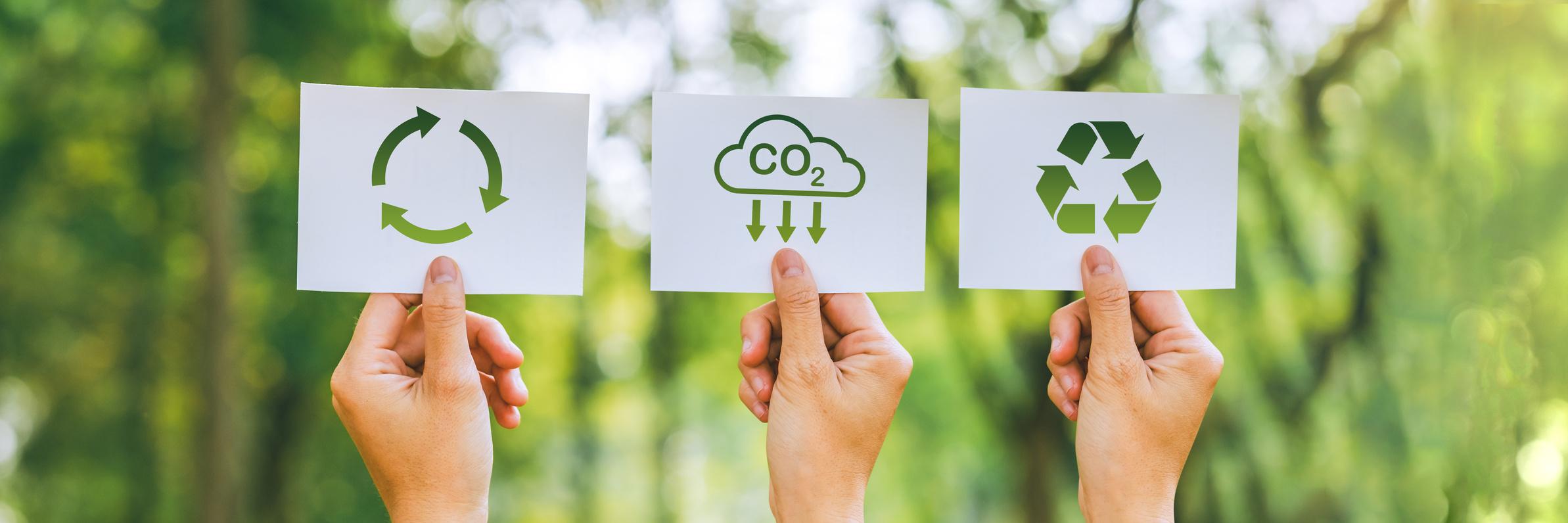
4 ISSUE 10 - APRIL 2024
1
Innovative Solutions Driving Circular Transformation
Extended Producer Responsibility (EPR)
EPR policies are being implemented globally, requiring manufacturers to take responsibility for the entire lifecycle of their products. In India, EPR is now mandated for electronic waste, plastic waste, and more
2
Waste-to-Resource Initiatives
Innovative approaches are emerging to convert waste into valuable resources This includes technologies like pyrolysis and biogas generation, which can turn organic waste into energy and biobased products
3
Eco-Design and Sustainable Materials
The design of products with recyclability and reusability in mind is becoming more common. Sustainable materials, such as bioplastics and biomaterials, are replacing traditional, less ecofriendly options
4 Digitalization and Data Analytics
The use of data analytics and digital technologies is optimizing resource management. From predictive maintenance in manufacturing to smart waste collection, data-driven solutions are enhancing circular practices. Technology is enabling the traceability and transparency in the supply chains
4
5
Companies are rethinking their business models, moving from selling products to offering services. This shift encourages longer product lifespans and reduces overall consumption. Circular Business Models
4 6 Collaborative Initiatives
Collaboration is key to the success of circular economy efforts Partnerships between governments, businesses, NGOs, and local communities can create a holistic approach to circularity
7
7
4 Circular Education and Awareness
Initiatives aimed at educating and raising awareness among the public, businesses, and policymakers are essential. Circular economy principles need to be integrated into educational curricula and corporate training programs
4 The transition to a circular economy is not without its challenges, but it is an imperative one The global landscape is evolving, with innovative solutions and policies driving progress toward a more sustainable and regenerative economic model In India, as elsewhere, the journey toward circularity involves changing consumer behavior, investing in infrastructure and technology, and creating supportive regulatory frameworks.
While challenges persist, the promise of a circular economy is too significant to ignore As India and the world embrace circularity, they move closer to a future where waste is minimized, resources are conserved, and environmental impact is greatly reduced. Through collaborative efforts and innovative solutions, the circular economy offers a path toward a more sustainable and prosperous world for all
5
ISSUE 10 - APRIL 2024
The Future of Circularity: Pivots to Societal Welfare and Business Responsibility
Dr. Pooran Chandra Pandey Advisor, UNESCO Inclusive Policy Lab, Paris
History and Context
History of human living harmoniously with the nature dates back to millennia; in recent times though, to the days of World War I (1914-18), severe consequences of which were amply demonstrated and felt through large scale chaos, devastations and destruction lasting through to World War II (1939-1945) These were critical years in evolution of multilateralism leading to one of the largest exercises designed to rebuild destroyed cities and urban centres in Europe, and the West, implications of which are still being experienced.
With World War II over, 1944 saw founding of Bretton Woods systems which gave the West and Europe a reason for peace, security and safeguarding the nature. The system brought to fore the establishment of financial behemoths in form and shape of International Monitory Fund (IMF) and the World Bank (the Bank) mandated to look after global financial volatility through robust monetary policies to help create a stable financial regime to aid development projects to by supporting war ravaged nations that needed both foreign exchange stability and financial resources to build their infrastructure and economies destroyed during wars.


Multilateralism
In 1945, with the United Nations (UN) established as a mother multilateral institution, other systems got subsumed within it to better align their actions and responses. I From the initial days of the UN being set up, socio economic issues began to dominate the multilateral body through debates and discussions on prioritising environment and human development
Even though, Swedish government right since the founding of the UN continued to approach it for holding an international conference on sustainable development but such a request could not be accepted by the UN due to many other important agendas occupying the attention of the world body.
Finally in 1972, at the insistence of the Swedish government, the United Nations Conference on the Human Environment took place in Stockholm with participants adopting a series of principles for sound management of the environment as then seen as an outcome of human activities paving the pathway for establishing interdepended between the health of the environment as a precondition for human activities. These stocktakes are adequately reflected in the Stockholm Declaration and Action Plan for the Human Environment (https://documents-ddsny un org/doc/UNDOC/GEN/NL7/300/05/PDF/NL7 30005 pdf?OpenElement) This declaration marked the start of the dialogue between industrialised and developing world on the link between economic growth, pollution of air, water, the oceans and welfare of the people around the world
6
ISSUE 10 - APRIL 2024
Sustainability Through Decades
This in the hindsight marked the evolution of sustainability as a notion, which in decades following the Conference began to develop as a mainstream agenda mainstreaming human centric approaches to the growth and population scale well-being that were interlinked to one another around production and consumption patterns of consumer centric market and profits nexus. From then onwards, sustainability also began to be defined in diverse context; while it was consumer oriented societies in developed economies and at the foundational co-existence of people and nature in the developing world
During 1980’s though, climate change issues began to be visible and concerns began to be shown by scientists about the impending to follow While science was moving forward to define the goal posts, not enough scientific discoveries had yet been made to conclude the issues around climate change beyond the knowledge of global warming occurring due to human activities over permissible limits, be it pollution on account of large scale infrastructure and rebuilding activities in Europe and the West or for that matter sucking large quantities of ground water for these reconstruction projects, among others
By early 1990s, the science had built enough data sets, analysis and scenarios fit to predict the loss in natural assets and consequences that were likely to follow with impact on air, water, soil, oceans, agriculture including implications on human lives. Climate scientists were also challenged on extent of damage that the global warming was likely to cause and the quality of data they generated. More importantly, oil, gas and coal companies contested scientific claims on carbon emissions versus their contribution to warming And, this continued until such times that there was a consensus on the nature of problem and ways to combat them was decided through adaptation and mitigation strategies multilaterally
In the period from 2000 and thereafter, science was clear and scenarios were vetted by international scientific community and multilateral institutions with clear understanding on not just to find resilient ways to combat climate change but
also to deploy (adaptation and mitigation) strategies including fixing ceilings on production and consumption activities especially in hard to abate sectors identified causing the worst harm to the environment and climate by their contribution to carbon emissions
Global Goals: Sustainability Versus Circularity
Turning point came around in 2000 when 8 global goals – MDGs- were introduced by the UN clearly mentioning ensuring ‘environmental sustainability’ in goal 7, collectively agreed by the UN member states This goal subsequently found its transition into UNFCCC led COPs putting sustainability agenda front and centre as a necessary condition for economic growth and human well-being Subsequently in 2015, MDGs transitioned into 17 sustainable development goals (SDGs) with clear articulation on sustainability through goals- 3, 6, 7,9,11,12,13,14 & 15, largest ever coverage of sustainability issues across supply and value chains impacting public well-being and economic growth through targets and stock stakes.
Intermittently, other notions such as circularity, blue economy, ESG, recycling also emerged as fit to purpose concepts in combatting climate change. With concepts and notions fancying imagination of the industry, governments and scientific community including civil society remained central to sustainability Circularity, for instance, drove its significance through recycling which later became contested on the principle that a process involved into a method can’t be justified that contributes to production of more carbon, using fossil fuel in recycling.
Data reveals that waste to wealth component in clean energy basket even today contributes to a mere 1 per cent with solar topping the chart at 76 per cent. Other similar notions became casualty too with passing time. Similarly, ESG touted as a new concept is far from truth as the first leading study on the concept was brought out by the UN through its reports – Who Cares Wins (2005) and Future Proof (2008) Moreover, limitations of ESG as an alternative to sustainability are potentially likely assume sustainability reporting standards’ framework at the best
7 ISSUE 10 - APRIL 2024
Circularity and its Future
Historically, the pathways to economic development pass through intersection between society, businesses and the state as pivotal actors collaborating and aligning their policies, finances, creativity and innovation, resulting in welfare of public at large and particularly those most in need, in what late Professor Richard Titmuss, inaugural chair professor of social administration at the London School of Economics and Political Science called as ‘philosophy of welfare’, heralding an era of social policy which, even to date continues, to benefit stakeholders
Over time, concept of circularity evolved was built on the touchstone of sustainability is evidenced to remain a foundational pillar of other alternative elements shaping and enriching our lives, wellbeing and environment.
Sustainability would potentially subsume other relatable notions including circularity within its fold, shining light on the best in our communities and businesses- both present and future- hinged on the elements of creativity and transformative change.

8 ISSUE 10 - APRIL 2024
Circular Design for Plastics: An Essential Fix for Sustainability
Dr. Vidhi Vora Founder & CEO, Green Phoenix Circular Solutions
What usually comes to your mind when I ask you what actions can you take to lead a sustainable/eco friendly lifestyle? Most commonly the reply is ‘Say No to Plastic’ due to the increased incidence of pollution caused by it being discarded as waste, thus finding its way into our landfills and oceans and its potential for increased GreenHouse Gas emissions along its whole lifecycle. However, if you look around the products we use, is it possible in the current age to completely eradicate ‘Plastic’ from our lives??
Plastic, a synthetic material derived from fossil fuels, was first invented by a chemist from Birmingham, Alexander Parkes who coined it as ‘Parkesine’ in 1862 It was further pioneered by Leo Baekeland in 1907 under the name ‘Bakelite ’
A revolution was seen in the 20th century as this innovation based on its multiple properties was introduced as a Sustainable alternative to mediums like glass, wood, paper, etc. Remember the dialogue from the movie 3 Idiots, where the character played by Aamir Khan explains that we are surrounded by Machines - “Pen ki nib se lekar pant ki zip tak, sab Machine hai” Similarly we are now surrounded by products made of some form of the synthetic polymer in their structure From the smallest paper clips to the largest airplanesthe material application has become all encompassing
So we come back to the question, is it possible to completely eradicate ‘plastic’ as a material from the products we use. Do we have Sustainable alternatives with similar properties that can replace it? Or do we look at solutions that utilize the ‘Sustainability Quotient’ of this material through the process of designing a Circular Economy

What is a Circular Economy?
A Circular Economy is a concept derived from the Natural Cyclical Processes that aids in resource management and minimizes waste generation, thus preventing detrimental impacts on the environment and society at large. Take for example the water or the carbon cycle in nature, the process is a closed-loop, cyclical & continuous, without waste generation. A circular economy adopts the same ecosystem where materials flow in a continuous closed-loop at their highest value as against the current linear economic system where resources extracted end up as waste products The current supply chains of synthetic polymers are linear and quite often single-use causing resource scarcity and environmental degradation
Designing a Circular Economy for ‘Plastics’
The versatility of plastics and its vast applications call for a systemic multi-step approach to design Circularity for Plastic SupplyChains While this in the broad sense can be expressed as the 9R framework, an essential factor is introducing circular design at the R&D stage with the establishment of Reverse Logistic Systems (through Extended Producer Responsibility or thirdparty vendors) for the material to re-enter the Supply Chains, converting it from linear to circular.
9
ISSUE 10 - APRIL 2024
The 9R Framework Design for Plastics
Circularity Includes:
1 1
Elimination & Replacement with Smarter Product Usage & Manufacture
Single-use plastic items from a bulk of the most polluting and resource intensive polymer products These can be eliminated from use or product design through sustainable alternatives and adoption of eco-friendly practices of Refuse & Reduce. Introducing services like leasing and renting can help with repeat usage with usage of better quality materials (eg: higher microns) that prevents waste generation Alternative feedstocks of bio-based raw materials can be used for manufacturing bioplastics
2
Extending the Lifespan of Products
Plastics being durable can be used to design heavyduty and resilient products with longer lifespans that can be Reused Additionally, the life can be extended through services of Repair, Refurbish, Remanufacture and Repurpose, thus reducing products and materials going to waste Appliances, electronics, automobiles, apparel, etc can make use of these processes.
3 Material Recovery and Application
Designing for recyclability can help retrieve material at its highest value from products that have reached the end of functionality and use. The retrieved polymer can be recycled to be used as feedstocks instead of virgin raw material to create the same product. In some cases, the recycled plastic can be upcycled to a different product This process can be resource intensive and hence is considered to close the loop only at the tail-end of the product's lifecycle Lastly, if material cannot be recycled it is recovered to generate energy and prevent its entry into the natural environment
Current Landscape: Challenges & Opportunities
Globally, the issues posed by improper plastic material management has been recognised and has led to many initiatives through multiple stakeholders. A legally binding Global Plastics Treaty (GPT) has been agreed upon to be adopted by 175 nations across the world in March 2022
towards design, manufacture and recycling of plastics for waste management and reducing GreenHouse Gas emissions. In the dynamic landscape of circular economy initiatives for plastics, diverse efforts are currently underway, often operating in silos. While this presents its share of challenges, it also opens a realm of opportunities for collaborative innovation and holistic solutions
Some of the challenges seen currently include but are not limited to:
1 Informal Plastic Waste Management
The collection, segregation and recycling of postconsumer plastic waste is done majorly by the informal sector in the country The sector is not completely integrated into a formalized structure with issues of low wages, health hazards and inadequate SOPs. Partnership of the sector with bigger organizations (public and private) as thirdparty aggregators could help overcome these challenges.
2 Lack of Technological and Design Development
Circular design for products having plastic components faces issues with lack of technological support. Same is faced from the mechanical recycling point of view that currently mandates specifications like monocolor, monotype, single-layered polymers for ease of recycling with minimal toxin generation Design for circularity at the R&D stage would play a significant role here
3 Minimal Reverse Logistics Systems
Inadequate infrastructure and connectivity to establish reverse logistic systems to close the loop at different levels of the 9R framework hierarchy (Reuse to Recover) leads to improper waste management, especially in the remote areas
Cross-border return transport of material is also impacted by factors of geography, country-specific policies, technological infrastructure, economic status, etc While the globe is well connected in forward logistics and transport, circularity requires a similar robust reverse logistics and transport system
10
ISSUE 10 - APRIL 2024
4 Greenwashing
False claims made by industries on the biodegradability or compostability of bioplastics is a rising challenge. Another issue is the extension of the linearity of supply chains where plastic waste from one product is converted to another product (under the claim of recycling) which in itself renders the material non-recyclable at the end of life Eg: converting recycled PET (used majorly in packaging) into garments by creating a hybrid yarn of plastic & natural fibers or MLPs (multilayer plastics) into accessories These techniques and innovation may close the loop once but pose a threat as microplastics, delayed pollution and resource scarcity
5 Regulatory Development and Policy Implementation
Globally, various policies and regulations have been developed for managing plastic waste including bans on single-use plastic However, there is still a gap in the implementation Quite often policies of one demography may not be suitable to the other which also is a challenge Quality control and standards of recycled material is a crucial criteria requiring proper governance
6 Behavioral Change
Deficiency of source segregation with improper waste disposal leads to plastic waste being dumped in unscientific landfills, clogging drains, degenerating soil and polluting water bodies. The contaminated dry waste cannot be recycled and its properties prevent biodegradation for a long span of years, leaching toxins and microplastics into the natural environment. A step towards behavioral change to reduce consumption and dependency on plastics while managing the waste is of great essence not just as individuals but also at the organizational and leadership levels
Innovation for Circularity of Plastics
With challenges come great opportunities that has led to a startup revolution innovating for solutions to bring in circularity in the plastic value chain From refilling and repair initiatives to deposit & recover schemes, sustainable alternatives, innovative recycling, etc While these act as pieces in the larger puzzle, a huge responsibility lies on the larger organizations to adopt Circular Economy principles, integrate them across their Plastic value chains with collaboration and transparency for risk reduction, resource efficiency and material management.
The urgency of the plastic crisis demands a collective commitment to embrace circular economy principles, fostering a future where plastics cease to be a problem and become a sustainable part of the solution The circularity journey is ongoing, but with persistent dedication and shared responsibility, we can redefine the role of plastics in a regenerative and environmentally harmonious global ecosystem

11 ISSUE 10 - APRIL 2024
Fostering Smartphone Circularity Through Repair Cafes
Ms.
Kritika Mahajan (PGP Batch 2022-2024)
Participating in the Give Goa project was not just an academic pursuit; it was a transformative journey that reshaped my perspectives on sustainability and the circular economy. Over the course of 12 weeks, my team and I delved deep into the intricacies of e-waste management, repair practices, and the potential of repair cafés to foster a circular economic transition. Through rigorous research, stakeholder engagement, and hands-on experience, we gained invaluable insights into the multifaceted nature of sustainability challenges and the interconnected solutions offered by the circular economy framework
At its essence, the circular economy represents a paradigm shift in our approach to resource management one that prioritizes longevity, efficiency, and regeneration over the linear "takemake-dispose" model. This shift is not only imperative for mitigating environmental degradation but also for addressing pressing social and economic issues such as resource scarcity, inequality, and climate change By keeping products and materials in circulation for as long as possible through practices like repair, reuse, and recycling, the circular economy offers a pathway towards a more sustainable and resilient future
Repairing emerges as a cornerstone of the circular economy, embodying its principles of resource efficiency and waste reduction By extending the lifespan of products and reducing the need for new manufacturing, repair interventions not only conserve valuable resources but also minimize the environmental footprint associated with production and disposal. Moreover, repair practices have the potential to create local

economic opportunities, particularly in regions like Goa where the informal repair sector plays a significant role in the economy
Throughout our project, we conducted extensive research to assess the feasibility of establishing repair cafés in Goa and to understand the dynamics of the repair ecosystem in the region. This involved engaging with various stakeholders, including repair technicians, consumers, policymakers, and industry representatives, to gain diverse perspectives on the challenges and opportunities associated with repair initiatives
One of the most enlightening aspects of our research was the opportunity to interview repair technicians working in the unorganized sector These interactions provided invaluable insights into the realities faced by those on the frontlines of sustainability and highlighted the importance of supporting and formalizing repair practices We learned about the challenges they encounter, such as limited access to resources and technical support, as well as the innovative solutions they employ to overcome these obstacles.
Our project also involved analyzing the role of consumer electronic companies in promoting repair and extending product lifespans While some companies have taken steps to facilitate repairability and provide support for repair initiatives, there is still much room for improvement Encouraging manufacturers to design products with repairability in mind and to provide access to repair documentation and spare parts can significantly contribute to the proliferation of repair culture.
12
ISSUE 10 - APRIL 2024
The culmination of our project was the presentation of our findings at a national-level forum, where we had the opportunity to share our insights and recommendations with stakeholders from diverse backgrounds. The positive reception and engagement we received underscored the growing momentum behind the circular economy movement and the importance of collaborative action in driving sustainable change
Under the mentorship of Professor Vishwesh Singbal, we were challenged to think critically and creatively about sustainable solutions to complex problems His guidance and expertise not only enriched our understanding of the circular economy but also inspired us to take ownership of our role as change agents in our community
Through his mentorship, we developed a deeper appreciation for the interconnectedness of environmental, social, and economic sustainability and the need for holistic approaches to address global challenges.
Looking back on our journey, I am grateful for the opportunity to have been part of such an impactful project. It has not only broadened my horizons and deepened my commitment to sustainability but has also equipped me with the knowledge and skills to drive positive change in my community and beyond As I continue on my journey, I am inspired to advocate for the principles of the circular economy and to work towards a more regenerative, equitable, and sustainable future for all


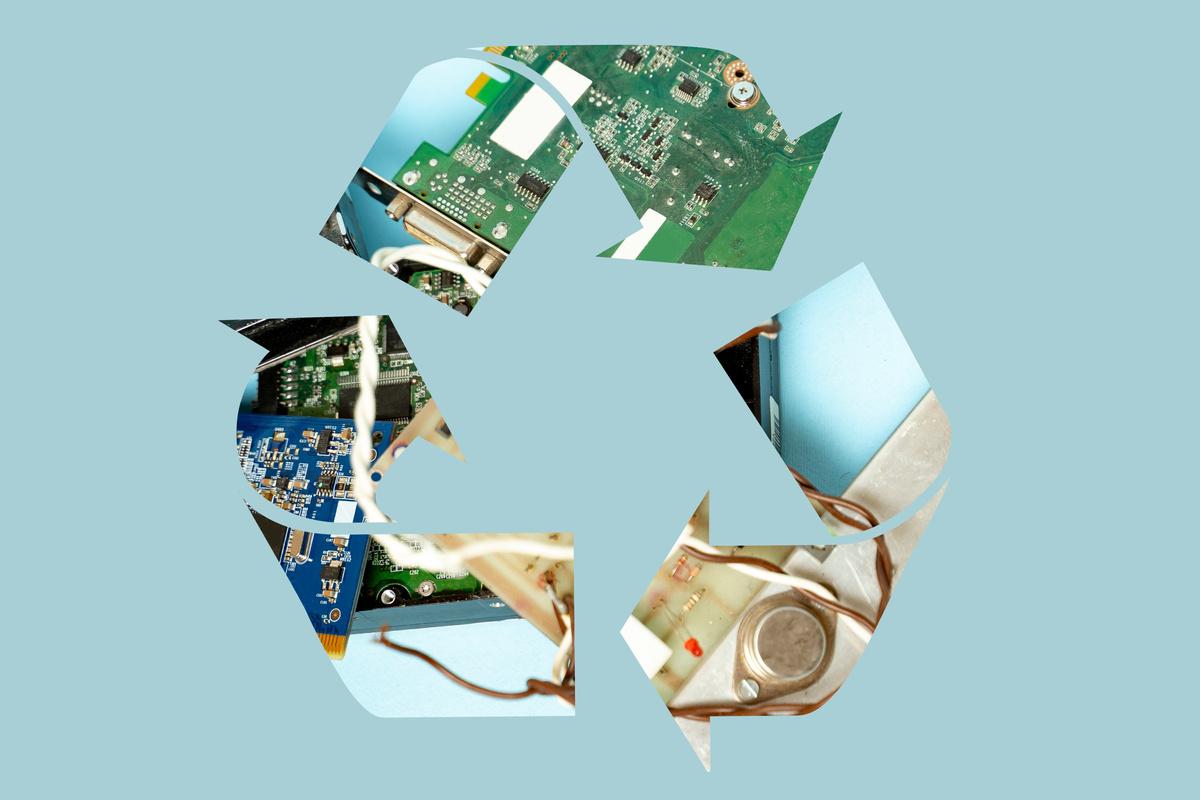
13
ISSUE 10 - APRIL 2024
Examining Repair Café's Role in Goa's Textile Sector
Ms. Bipanchi Borah (PGP Batch 2022-2024)
The Give Goa Initiative, a unique service-learning program for PGDM students to bring about a positive change in the environment in GIM ranges projects from diverse fields from environment to traffic management.
The assigned Client for our project was ICCE, International Council for Circular Economy- the largest international network for professionals, corporations, and organizations working in the Circular Economy. Their mission is to accelerate the transition to a circular economy that is restorative and regenerative by design The project's objectives were to understand the consumer perceptions of Repair Cafés in the state of Goa, understand tailor/textile repair workers' perspectives on Repair Cafés in Goa, and determine the contribution of Repair Cafés towards a circular economy in the Textile industry. In this assignment, the project was divided into the above three objectives based on the stakeholders involved and the group tried to analyze through every stakeholder's perspective.
Circular Economy is the concept of increasing the longevity of products rather than scrapping them and extracting new resources The study of this project was done to assess the scope of textile reusability in a circular economy with the introduction of Repair Cafe in Goa Clothing repair cafes are businesses that provide repair services for clothing and other textile items These cafes typically offer a space where people can bring their clothes that need repairs, such as torn or ripped garments, and have them fixed by skilled professionals. The concept of clothing repair cafes is based on the idea of promoting sustainability and reducing waste by extending the lifespan of clothing items

Rather th thes, customers cafe and have and reducing t aste. The textile most influential industries in the world, with a significant impact on the environment and society. As consumer demand for fast fashion continues to grow, the textile industry is facing unprecedented challenges in terms of sustainability. This study aims to explore the concept of textile industry sustainability by examining its various dimensions, including environmental, social, and economic factors
Analysis
The project followed a mixed-method research design that was found suitable for this study. The research design involves both quantitative and qualitative research methods. We floated Google forms to Goan households of various income levels to understand their perception on the topics of textile reusability, the lifecycle of textiles, and the concept of a repair café
The major findings were-
The primary reasons how respondents dispose of clothes is via donation (62%), followed by using it for other purposes (cleaning clothes) (41%) and hand me downs to younger siblings (14%) – This indicates the importance of sustainability imbibed in Indian traditions and practices.
The primary reason to dispose of clothes is due to regular wear and tear (57%) – this helps to also analyze that there exists an opportunity to increase the longevity of textiles
14
ISSUE 10 - APRIL 2024
The chronological decision parameters for respondents to avail repair services are – Cost of repair (34%), Convenience of location (29%), Customer Service (23%), and credibility expertise (14%).
As per the above reports, 74% (148) are positive to avail of the services of a Repair Café.
To understand the perception of Repair Café by Tailors in Goa, the team conducted interviews with different tailor ranging from street-side repair shops to boutique shops
90% (18 Numbers) of the tailors /repair workers interviewed are business owners and have been in it for over 10 years.
Out of the 20 tailors interviewed from areas such as Panjim, Madgaon, Vasco and Sanquelim, there was 70% (14 respondents) were open to the idea of a Repair Café subject to certain conditions
The top three reasons for their apprehension towards the business model of a repair café are – Compensation and benefits, location of the repair café, loss of independence compared to a business environment.
Goa Waste Management Plant Details
To understand the disposal methods of textiles in Goa, the team visited the Goa Waste Management Plant and came to the following observations –
In terms of textile waste, there is no evidence of accurate data on the amount of waste generated by Goa This is mainly because the amount and the condition of textile waste received in the Plant cannot be used for recycling, but rather sent to cement factories nearby for energy generation
The most important output from the Plant was the importance of the usage of tech and a unified supply chain system to make every stakeholder aware of the process of segregating waste at its source thereby reducing waste and also generating revenue
The business model follows a decentralized approach of door-to-door collection from villages up to the Plant, raising the importance of the concept of primary collection
Conclusion and Recommendations
To understand the consumer perceptions on repair café in the state of Goa
Execution of a pilot project in residential societies to make repair café an experiential process. Such models have been incorporated in places like Bangalore and Kolkata. This will help spread awareness of the importance of circular economy and sustainability and market accordingly.
Market research conducted in such areas will help to gauge the level of awareness and eagerness of Goan people on Repair Café
To understand tailor/textile repair workers' perspectives on Repair Cafés in Goa There are two models that we have discussed in our Way Forward –
Business Model 1
NGOs have charity events in which they have donation drives for second-hand clothes. This presents an opportunity There can be a collaboration between Tailors and NGOs wherein the Tailors can be hired on a contract basis to repair such clothes for the NGOs
These clothes can then be either sold through Thrift fairs or directly donated, depending upon the NGO. Thus extending the lifespan of the clothes and also contributing to the circular economy
Business Model 2
In Goa many exhibitions are being organized, and tailors can be incentivized to get free/subsided stalls at these to popularize the concept of repair cafes.
Once people know that such repair stalls are there in exhibitions they will themselves carry clothes for repair to these stalls
One major advantage is that people need not spend extra transport costs to come to the place of repair cafe as they would be anyways coming to the exhibition and the repair cafe is part of the exhibition
15
ISSUE 10 - APRIL 2024
Conclusion
The main point of this project was to assess the level of awareness of the consumer about sustainability and the critical role of repair café especially about textiles and in what ways we can mitigate this waste and promote textile sustainability
Textile waste is a huge carbon emitter and to tackle this problem the principle of circular economy was encouraged By this principle, the concept of Repair Cafe was mooted. This concept quickly caught up in the Scandinavian countries, Europe and America. In this Project, we have tried to assess whether a similar concept can be implemented in India, especially in Goa.
Through our secondary and Primary data collection and analysis we have seen that despite textile waste generated in the first place, the existence of various societal practices in our Indian households like “Use until the last Bit”, as the clothes become too old, become torn or tattered they are used as wipe cloths (Pocha) in the house. Hence the presence of reusable culture exists This is unlike the western countries where there is a specific cloth bought for each purpose
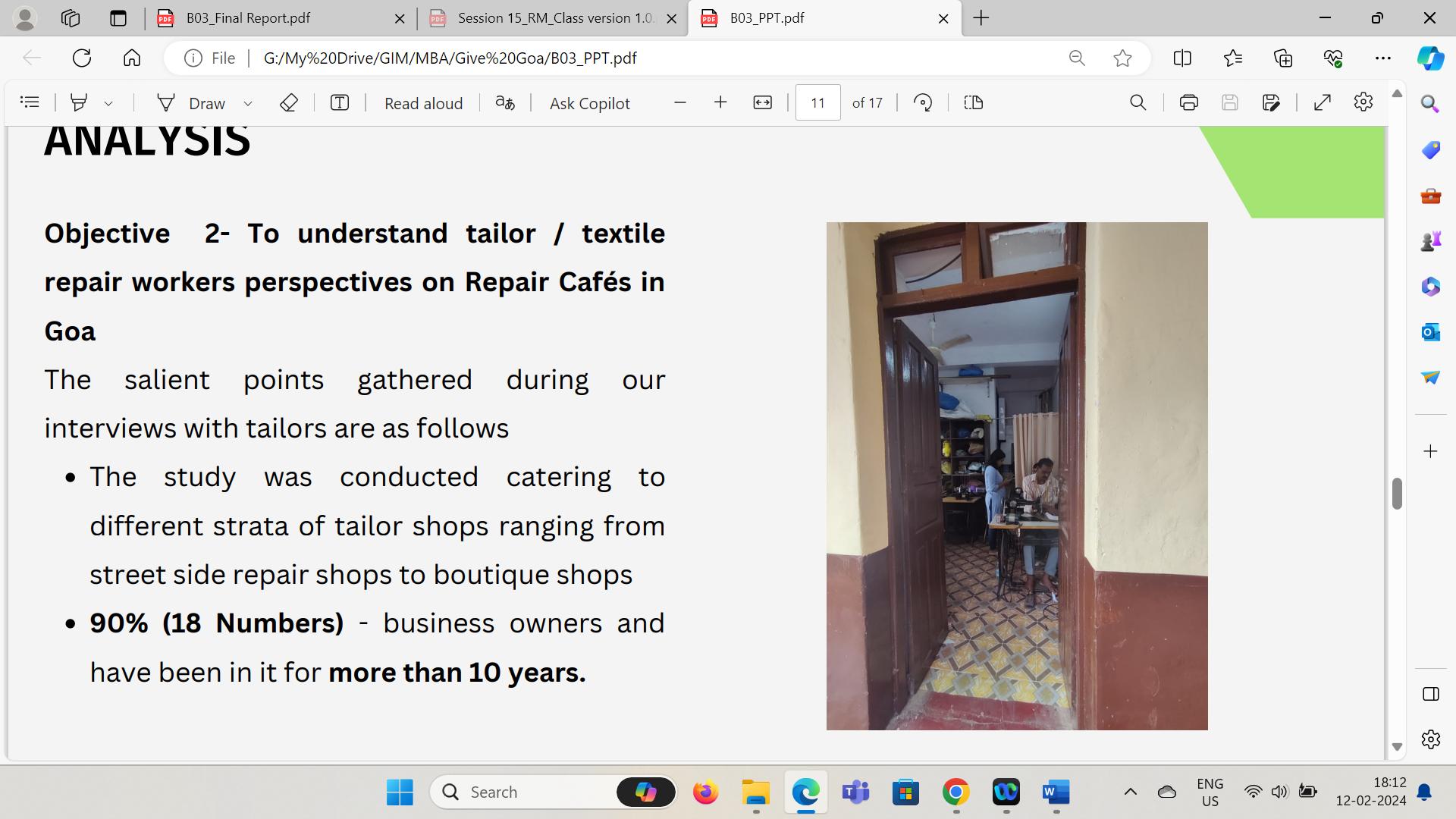
The concept of Repair cafes is also an awareness campaign to spread the idea of using repair and use clothes by extending their lifestyle But the quality of clothes of fast fashion brands is such that they are meant to be aesthetic and not long-lasting
Hence India was already practicing sustainability and textile circular economy in some manner Of course, in recent times due to the increased influence of Westernization, the consumer mindset is slowly changing but we still retain our conservatism attitude Many of the tailors that we interviewed also reported of doing repairing clothes along with altering and other tailoring functions. Hence already acting as mini repair cafes Thus, the Concept of Repair Cafes in the way that it is being used in the western countries looks challenging in terms of the sample we surveyed but with certain tweaks and adjustments according to the Indian Context, there is a possibility of its implementation
16
Interviews with tailors in Panjim Market
Visit to Goa Waste Management Plant
ISSUE 10
APRIL
Interviews of tailors by Give Goa Team from Panjim and Margao market respectively
-
2024
Circular Economy in the Tourism Sector of Goa
Mr. Prajwal Hegde (PGP Batch 2023-2025)
The Sustainable Development Goals (SDGs) of the 2030 Agenda provide a global framework for promoting wealth, harmony, and environmental protection. SDG 12 is notable among these goals since it strongly focuses on sustainable production and consumption practices across all industries Although a popular tourist destination, Goa finds it difficult to achieve these sustainability standards, mainly because of the unbridled expansion of its tourism and industrial sectors
A major contributor to Goa's economy, the tourism industry affects the state's social cohesion and natural equilibrium in addition to increasing GDP. Although tourism improves regional development and creates jobs, unrestrained growth in the industry has resulted in pollution, resource depletion, and the loss of local cultures Additionally, the "demonstration effect" linked to tourism makes locals' unsustainable consumption habits worse
There are three main hurdles in the adoption of the circular principles in the tourism sector of Goa:
1 Lack of Awareness and Adoption
There is a serious lack of awareness among businesses across Goa regarding circular practices and ways to adopt them in day-to-day activities This is multiplied by the fact that most businesses do not take the principles of sustainable tourism seriously as they do not see any immediate benefit to their business by adopting it.

2 Initial Investment Cost
Most of the MSMEs in Goa can avail themselves of subsidized loans with lower interest rates through various government schemes like the Prime Minister's Employment Generation Program (PMEGP), Credit Guarantee Fund Scheme for Micro and Small Enterprises (CGTMSE), and others but we observed that these loans tied the business with the thought of paying it back rather than investing in a transition to a sustainable future
3 Insufficient Infrastructure and Resource Management
There is a lack of infrastructure like recycling stations or collection by authorities targeted at recycling the products or reusing them The village panchayats fare worse in this matter due to the lack thereof proper attention given to waste management and recycling.
By embracing the principles of circular economy, the tourism sector in Goa can not only minimize its ecological footprint but also create long-term socio-economic benefits for local communities and future generations This research contributes to the growing body of knowledge on sustainable tourism development and provides valuable insights for policymakers, industry practitioners, and researchers seeking to promote circular economy principles in the tourism sector of Goa and beyond.
17
ISSUE 10 - APRIL 2024
The Rise of the Circular Economy in India
This article is based on “India’s Circular Revolution” published by Drishti IAS at https://shorturl.at/FKW47
India, acknowledging the critical need to embrace sustainable practices, has strategically prioritized 'Resource Efficiency and Circular Economy' as one of its core themes in global deliberations, notably during its G-20 presidency. The shift from the conventional ‘take-make-dispose’ model to a more sustainable ‘reduce-reuse-recycle’ approach is not just a policy shift but a necessary evolution in the face of global resource depletion and environmental crises
Under its G-20 agenda, India has highlighted four key areas for implementing circular economy principles:
1 Circularity in the Steel Sector
Recognizing steel as a pivotal material for infrastructure, India aims to reduce the environmental impact of its production and consumption By fostering recycling and minimizing waste, the initiative intends to lower the sector’s carbon footprint significantly. The steel industry, essential for various sectors such as construction and manufacturing, is also a major contributor to environmental pollution. India’s circular economy approach in this sector is poised to tackle the dual challenges of waste management and emission control, aligning with several United Nations SDGs
2 Extended Producer Responsibility (EPR)
This policy mechanism holds producers accountable for the lifecycle of their products, encouraging them to innovate towards more sustainable practices such as recycling and reducing resource consumption EPR has emerged as a transformative strategy within India’s policy framework. By making producers responsible for the post-consumer phase of their products, the policy encourages the development of eco-friendly products and sustainable waste management practices This not only supports recycling initiatives but also stimulates the market for recycled materials, fostering a circular supply chain


18 ISSUE 10 - APRIL 2024
Leveraging biological resources for energy and materials, this area focuses on reducing dependence on fossil fuels and enhancing agricultural and forestry sustainability The shift towards a circular bioeconomy promises substantial environmental and economic benefits: Reduced carbon footprint: By substituting fossil fuels with bio-based alternatives, this initiative aims to curb greenhouse gas emissions Sustainable resource management: It promotes the use of waste and residues, enhancing overall resource efficiency.
Economic opportunities: Particularly in rural areas, this shift is expected to generate employment, thereby supporting socioeconomic development.
4 Industry-Led Coalition
A collaborative effort aimed at enhancing resource efficiency across industries through shared practices and technologies Despite its potential, the transition to a circular economy faces several challenges Infrastructure development, technological advancements, and consumer behaviour change are significant hurdles Furthermore, coherent regulatory frameworks and financial strategies are essential to foster and fund these initiatives
India’s move towards a circular economy model reflects a comprehensive effort to embed sustainability in economic growth strategies. By focusing on key sectors and leveraging policy tools like EPR, India not only aims to enhance its resource efficiency but also sets a global benchmark in sustainable development. As the world watches, these initiatives could very well dictate the success of global environmental and economic policy in the coming decades


19 ISSUE 10 - APRIL 2024 3 Circular Bioeconomy
Seminar on Corporate Governance and CSR Enlightens Goa Institute of Management
A seminar on "Organizational Governance & Corporate Social Responsibility (CSR)" was held today at the GIM campus on 28th March 2024, in collaboration with the Bureau of Indian Standards and CSSA The seminar featured speakers including Shri Anuj Bhatnagar, Scientist G & Head at the Bureau of Indian Standards (BIS); Mr Rajiv Ranjan, Scientist C at BIS; Prof Ajit Parulekar, Director of the Goa Institute of Management; and Ms Pallavi Prabhu Chodnekar, Company Secretary and Compliance Officer at VIMSON-Shivanand Salgaonkar Group. Each brought expertise from their respective fields, discussing the intricacies of CSR standards, legal frameworks, academia's role, and technological advancements in CSR. he event, attracting over 90 participants from diverse sectors, concluded with a vibrant panel discussion, emphasizing the integration of CSR standards into corporate and academic frameworks to foster sustainable development


Empowering Future Leaders: Kumaraguru College’s Dive into Sustainability
The Kumaraguru College of Liberal Arts and Sciences, in partnership with the Goa Institute of Management, recently wrapped up a week-long Sustainability and Responsible Management Immersion Programme Running from February 5th to 9th, 2024, this specially curated program w designed to instill a deep-seated understanding sustainable practices in business and socie contexts among students. It featured an array interactive sessions, including in-depth worksho on circular economy principles, leadership sustainable business practices, and strategies embedding sustainability into corpor frameworks Additionally, the programme enrich participants' learning experiences through fi excursions to organizations leading in sustaina operations, offering practical insights into real-wo applications
Panel discussions with sustainability experts further broadened perspectives, making this event a pivotal step towards preparing future leaders to navigate and mitigate the environmental challenges of our times
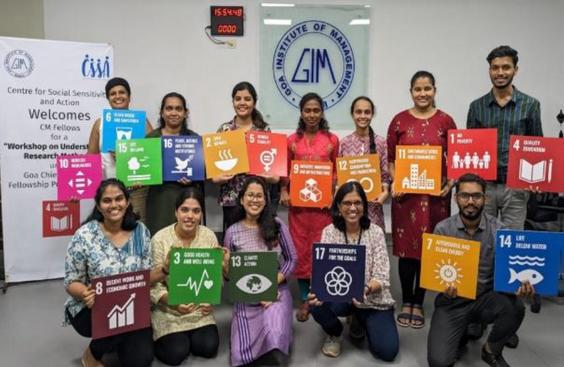
20
RECENT NEWS ISSUE 10 - APRIL 2024
GIM Faculty to Lead Project on Gender, Health, and Climate Action
Prof Sreerupa Sengupta, along with Prof Divya Singhal and Prof Supriya Phadnis have been honored with a project by the German Institute of Development and Sustainability, focusing on "Local Feminist Perspectives as Transformation Levers." This initiative aims to highlight the transformative work of grassroots organizations in India, crucial in challenging societal norms to better the lives of women and girls in rural areas by enhancing service access, increasing decisionmaking voices, and improving livelihood opportunities through skill development The project seeks to spotlight gender-sensitive interventions in health and climate change and propose policy recommendations for more genderfocused climate action and health programs. GIM is the only recipient in India for this multi-country project, involving Uganda and Ukraine.

GIM's GiveGoa Initiative Expands Nationwide
GIM has taken a monumental step by expanding its Prof. Padmanabhan led GiveGoa initiative across India, deploying over 25 student teams to work on sustainability projects nationwide This expansion propels GIM's commitment to social responsibility and environmental conservation into diverse communities and ecosystems beyond Goa The initiative provides students with invaluable experiential learning opportunities, immersing them in real-world challenges to foster critical thinking, problem-solving skills, and a profound understanding of grassroots-level sustainability issues. This expansion is a stride towards nurturing responsible leaders capable of driving meaningful social change GIM's pioneering move not only amplifies its impact on sustainable development but also sets a precedent for integrating academic excellence with social innovation

21
ISSUE 10 - APRIL 2024
GIM Faculty Members Participate in PRME Champions Meeting for
Professors Sreerupa Seng from the Goa Institute recently participated in the for Responsible Managem Champions Meeting for t CUNEF University, Madrid, The meeting, which drew o Schools, focused on initia and teaching collaboration peer learning GIM is upcoming collaborations Schools on projects that sustainability, innovative p Sustainable Development climate action into mana Centre For Social Sensitivi GIM appreciates PRME for CUNEF University for hosti milestone in GIM's comm management education
the 2024-2025 Cycle
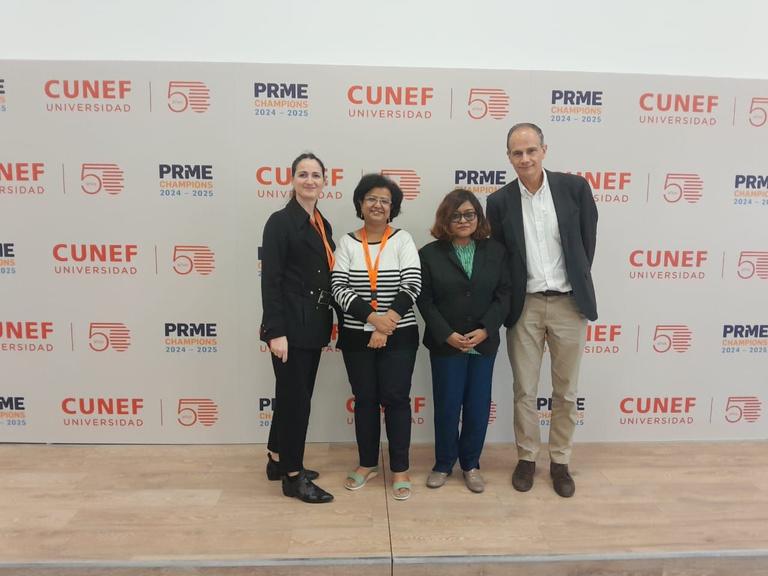
GIM Faculty Spear National
C
Prof. Dr. Aanchal Singh, GIM faculty mem part of CSSA at GIM, participated in National Convention on "Advancing Su India: Driving Change with Forward Fast on February 23, 2024, in New Delhi Host UN Global Compact Network India, the co targeted critical global challenges, s comprehensive agenda focused on Change, Gender Equality, Living Wage, and Investment, and Water Resilience. T aimed to foster discussions on acc sustainable, equitable, inclusive, a development models before the 2030 Prof Singh's engagement at this convention reflects GIM's enduring com to sustainability and positive societal showcasing the institute's role in lea charge towards a more sustainab prosperous future for India

ISSUE 10 - APRIL 2024

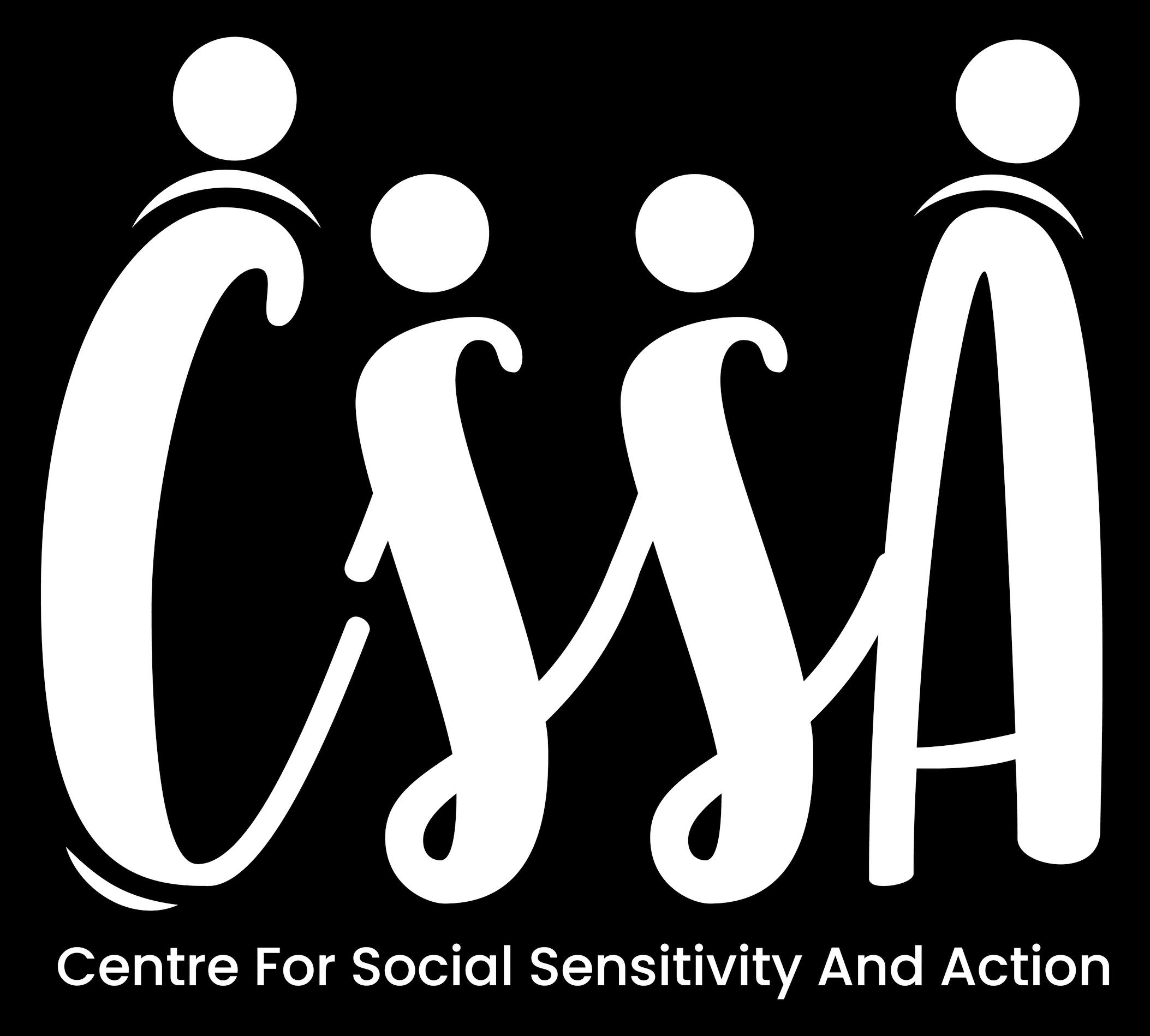
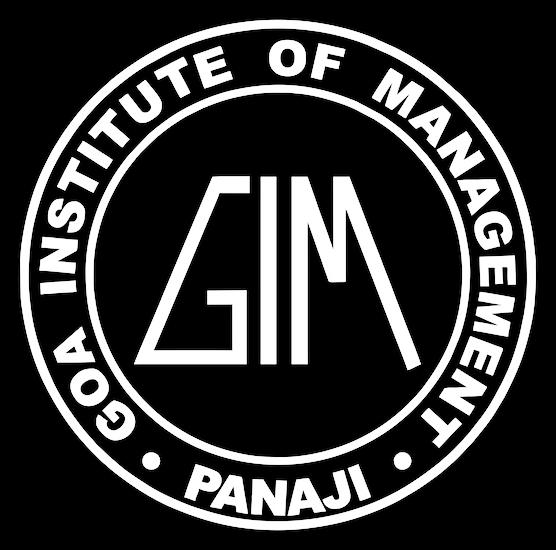
109284213/ linktr.ee/cssagim linkedin.com/in/cssa-gimtwitter.com/cssagim instagram.com/cssagim/ facebook.com/cssagim Write to us: cssa@gim.ac.in






































